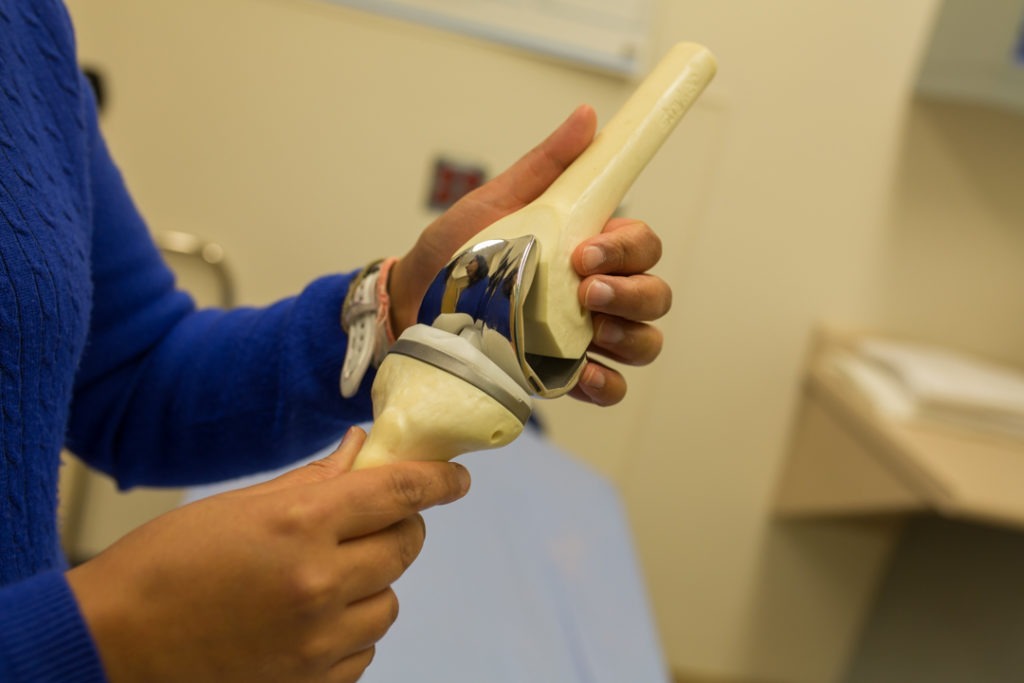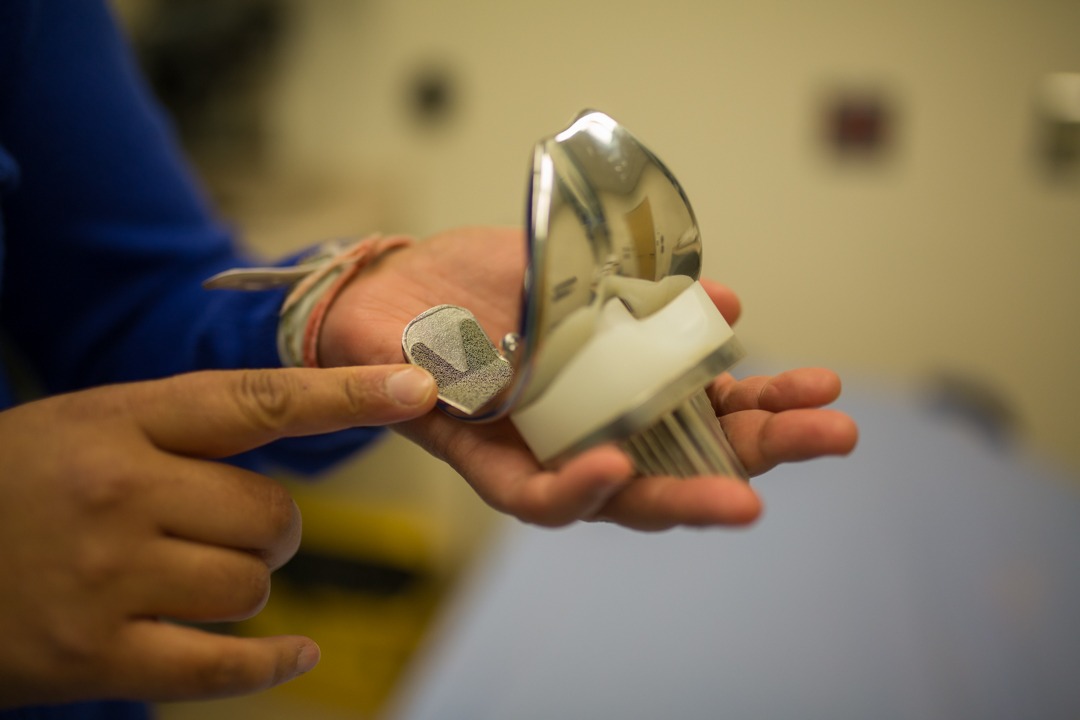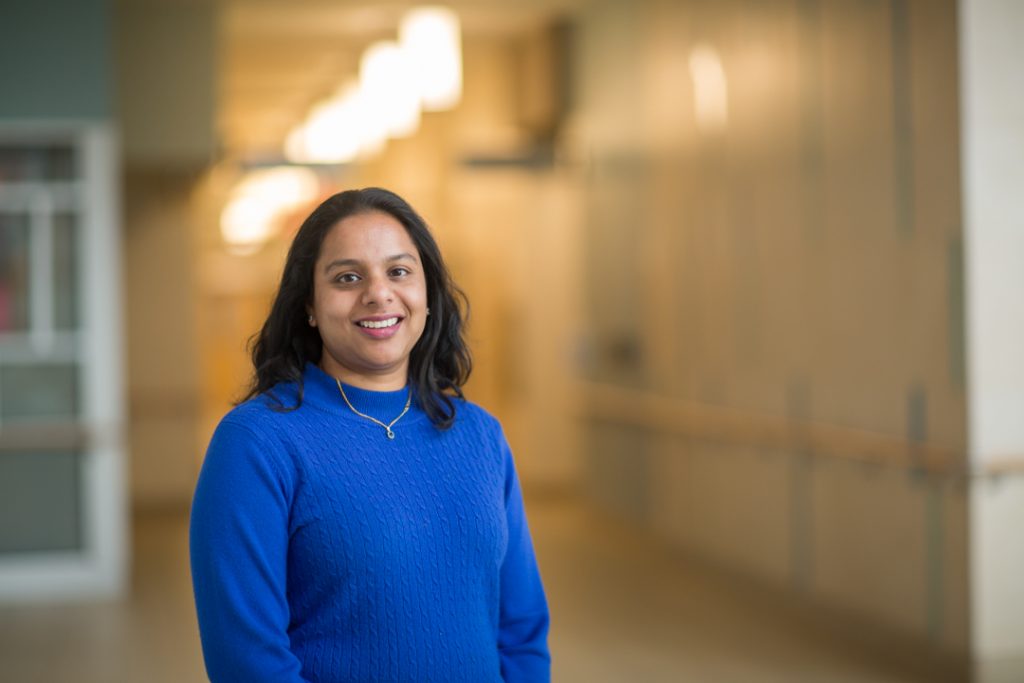
Introducing… an advanced practice physiotherapist
Sampa Samanta is an advanced practice physiotherapist in the Hamilton Niagara Haldimand Brant Local Health Integration Network (HNHB LHIN). She has been in this role for the past 10 years.
Favourite colour: red/ book genres: suspense and adventure/ vacation spot: Mexico/ music: alternative or classical/ animal: dogs/ food: pasta/ holiday: Canada Day
What do you love most about your job?
I enjoy explaining to patients what their symptoms mean and then discussing the different management options they have, in ways they can understand. A lot of clients feel their diagnosis is a sign of old age and therefore they see a need to cut back on activities, when really they need to keep moving. I love the look of satisfaction they get when I teach them the right type of exercises. I also love helping people navigate our complex health care system to ensure they can access the right care at the right time.

When you tell people what you do, how do they usually react?
They usually reply with something along the lines of “That sounds interesting.”. Most people then proceed to talk about their own joint problems.
“I am always pleased to see that patients are excited to improve their health.”
How does the LHIN work with HHS and other hospitals to serve patients?
When my job and this program first started, the thought was that we would see patients at a centre located at Chedoke hospital. However, the patients had limited access to surgeons here and our LHIN covered a huge area outside of Hamilton, making it hard for them to access our services. It was then decided to travel between the different hospitals and work with various arthroplasty surgeons in our LHIN to help manage patients with knee and hip osteoarthritis and other ailments.
We now have 7 successful Regional Joint Assessment Program locations, throughout our area, where we do our work. Our success is due to surgeon leads at other hospitals willing to try innovative ways to help improve access to arthritis management not necessarily just joint replacement surgery.

Describe your most challenging days at work.
I find that the most challenging days are the ones when patients arrive to their appointments with their own plan set for dealing with their diagnosis. While these patients can be challenging, I am pleased to see that they are excited to improve their health.
Patients often assume that they will be seeing a doctor, so it is challenging when I have to explain my role. Usually these patients end up being very satisfied, even though they have not seen the doctor.
What do you do after work to unwind?
I love to walk and exercise. I also love to cook and read. When I have the time, I enjoy browsing through different stores and shops.
“I am glad to say that we have been successful in expanding our program to all areas of the region.”
What is it like working in all of the different towns and hospitals?
It is difficult to schedule and I am amazed I remember where I have to be on a day to day basis. We have varying degrees of support at the different sites and sometimes have to multitask more. Each site has its own challenges and I am glad to say that we have been successful in expanding our program to all areas of the region. It is sometimes a challenge to meet and collaborate with the surgeons and their busy schedules; however, most patients are accepting of the program and are grateful for the streamlined process.
What do you eat to keep you energized at work?
My guilty pleasure is the chocolate macaroons for sale at our cafes.

What does a typical day at work look like for you?
The patients I see are typically adults over 50 years of age. For each patient, I complete a full health history, order x-rays, and arrange additional consultations if necessary. I complete a physical exam and review the diagnostic imaging with the patient. This ensures they can see and understand their diagnosis. My team and I then come up with a plan of management with the patient. These paths are all unique and best suited for each patient’s needs and goals. This plan involves referrals to other health care providers, accessing community resources, or a referral to surgeon for surgery or treatment.
For more complicated cases we sometimes review the file and collaborate with the surgeons. For patients who need surgery or advanced treatment, we follow a different path. I thoroughly dictate our assessment and plan of action to the physicians and surgeons for the next step. I also recruit patients for research projects and complete outcome measures.
